VERY RARE! WWII Original 1944 Operation Cartwheel "CONFIDENTIAL" Solomon Islands Campaign - Bombardment of Munda and Vila-Stanmore Combat Narrative Intelligence Report with Maps


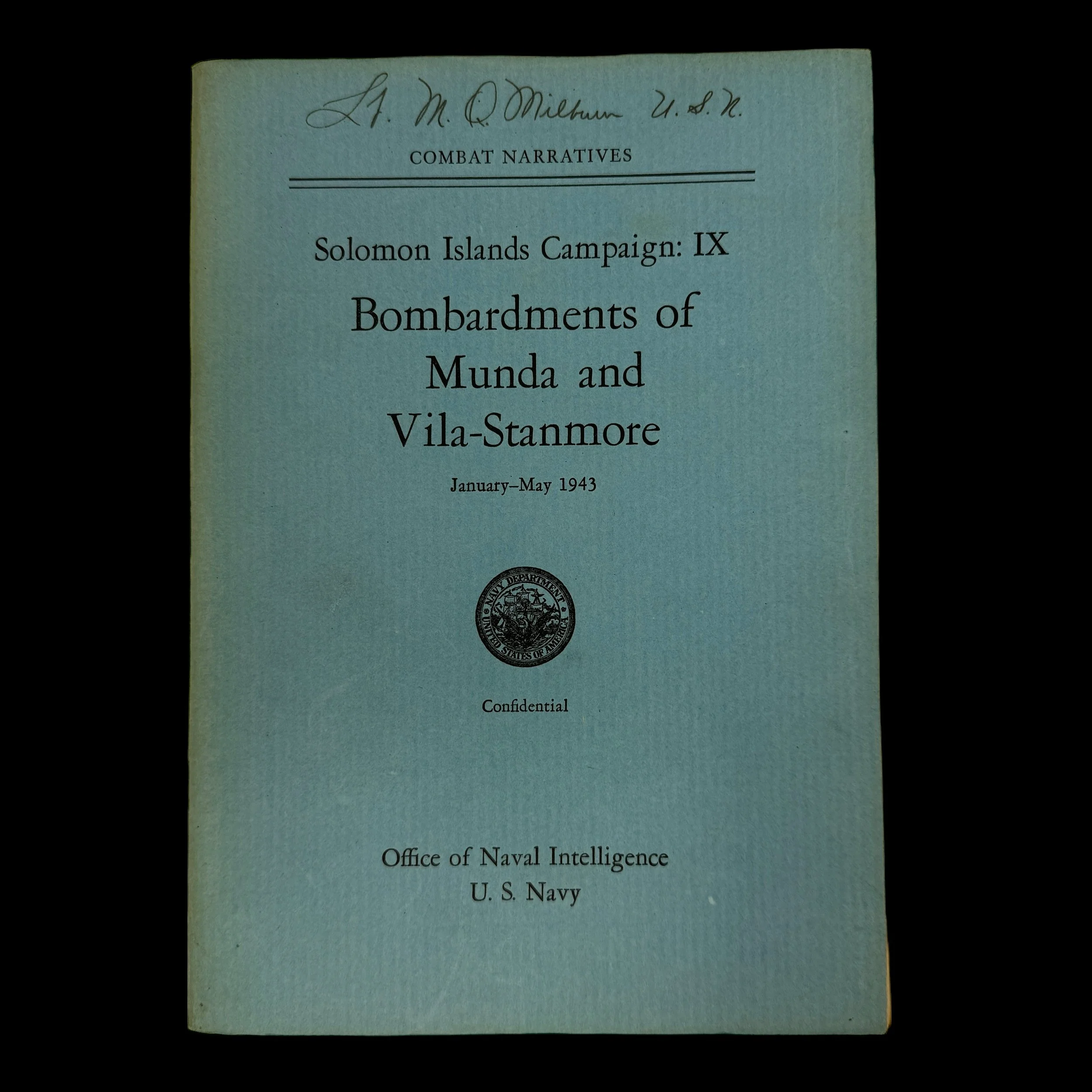







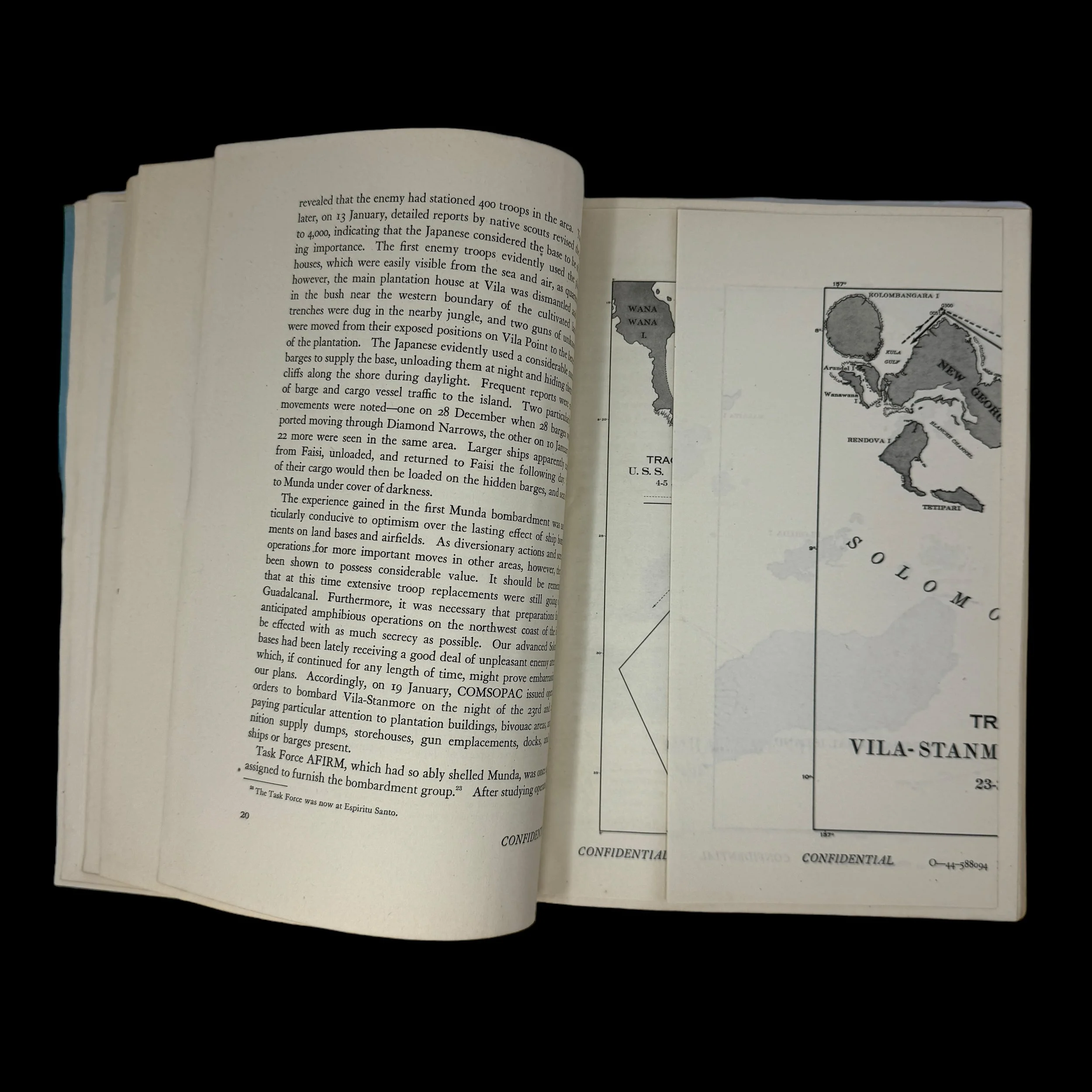







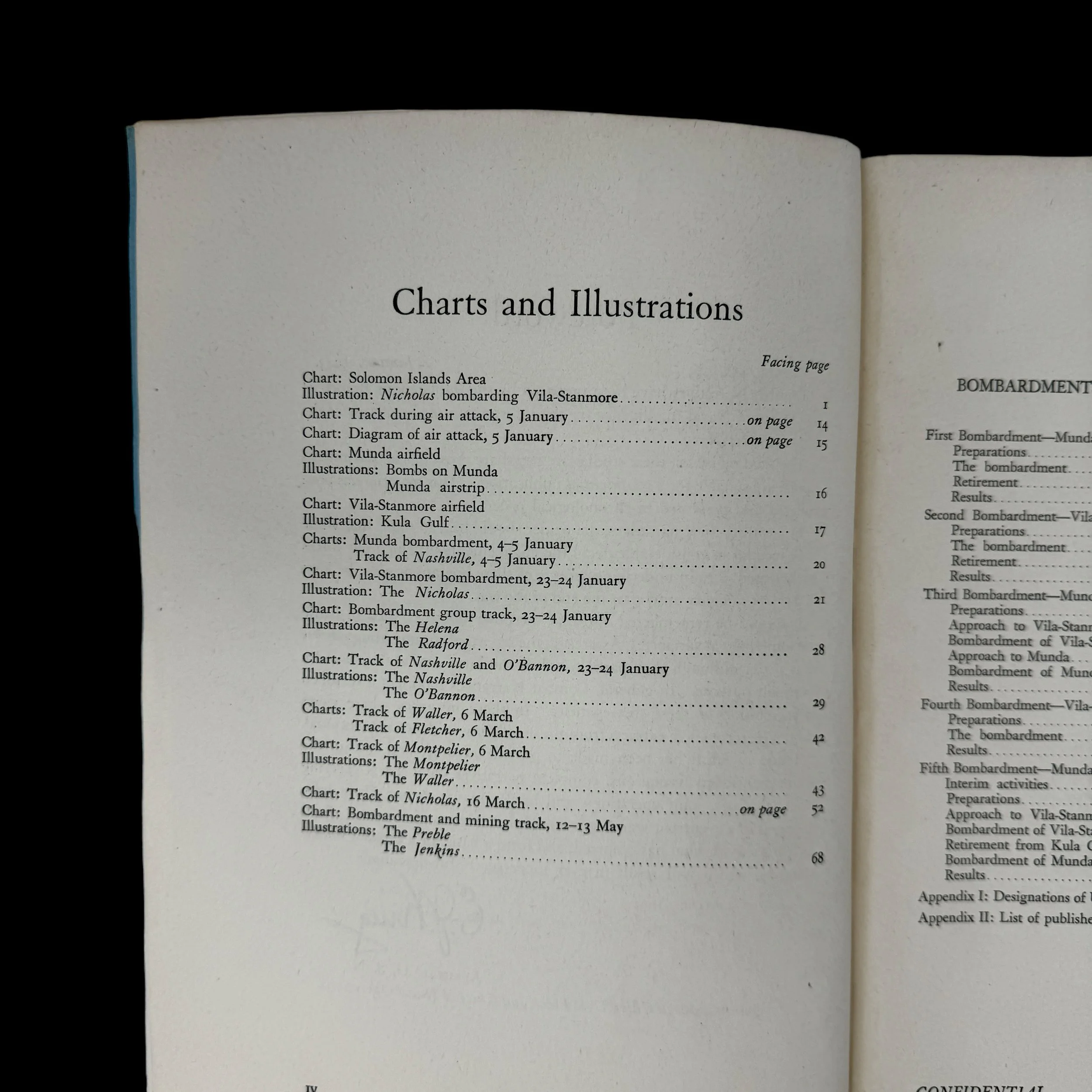
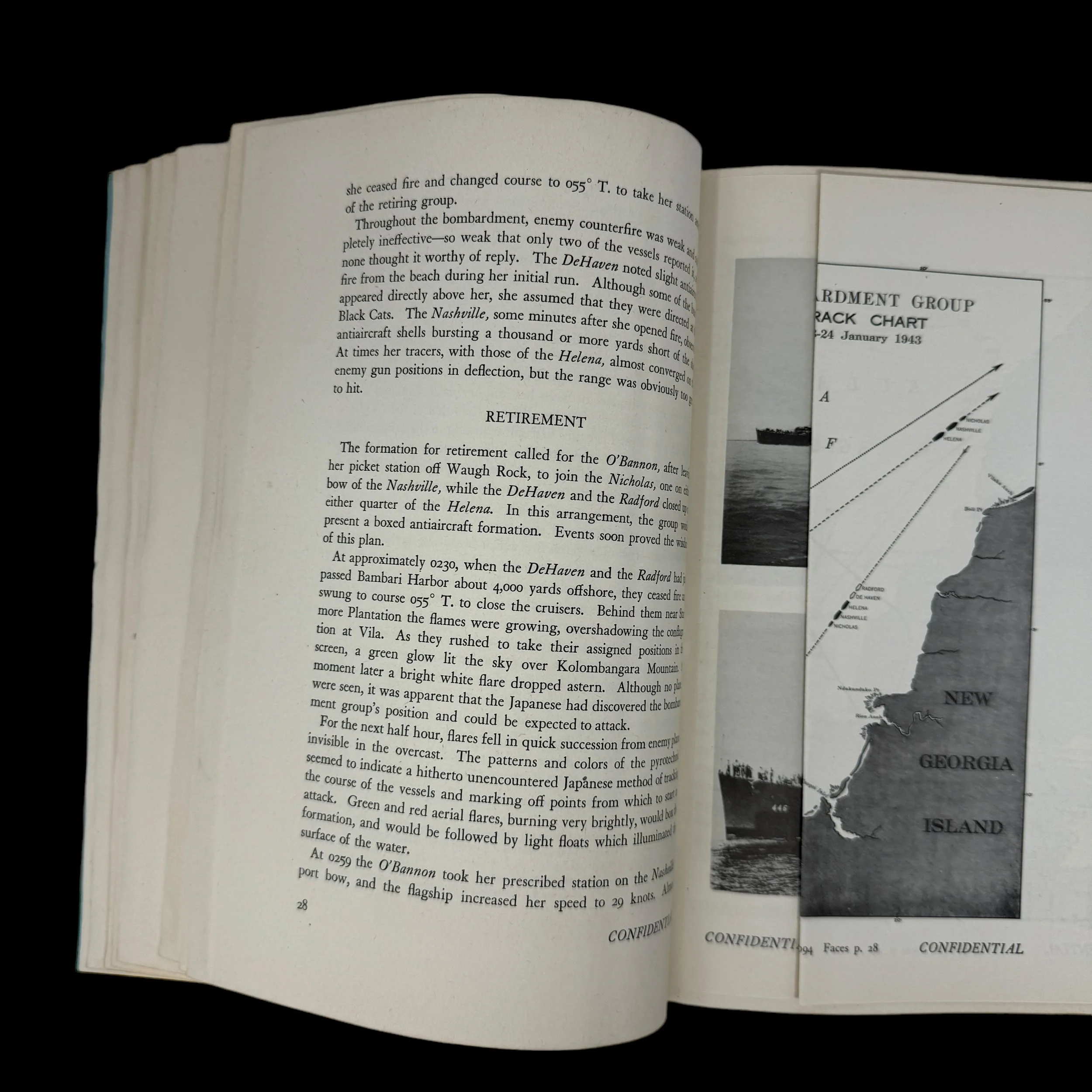
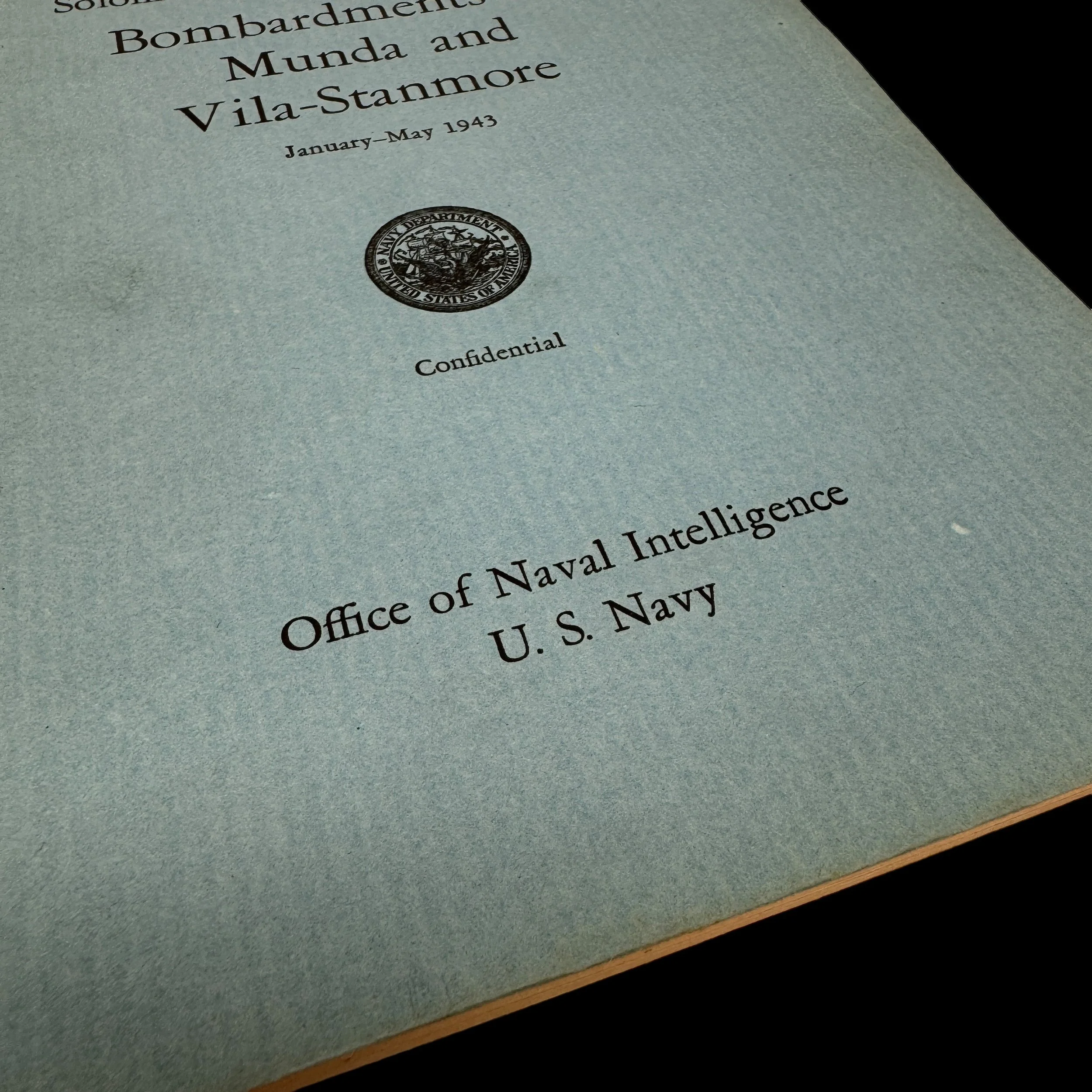
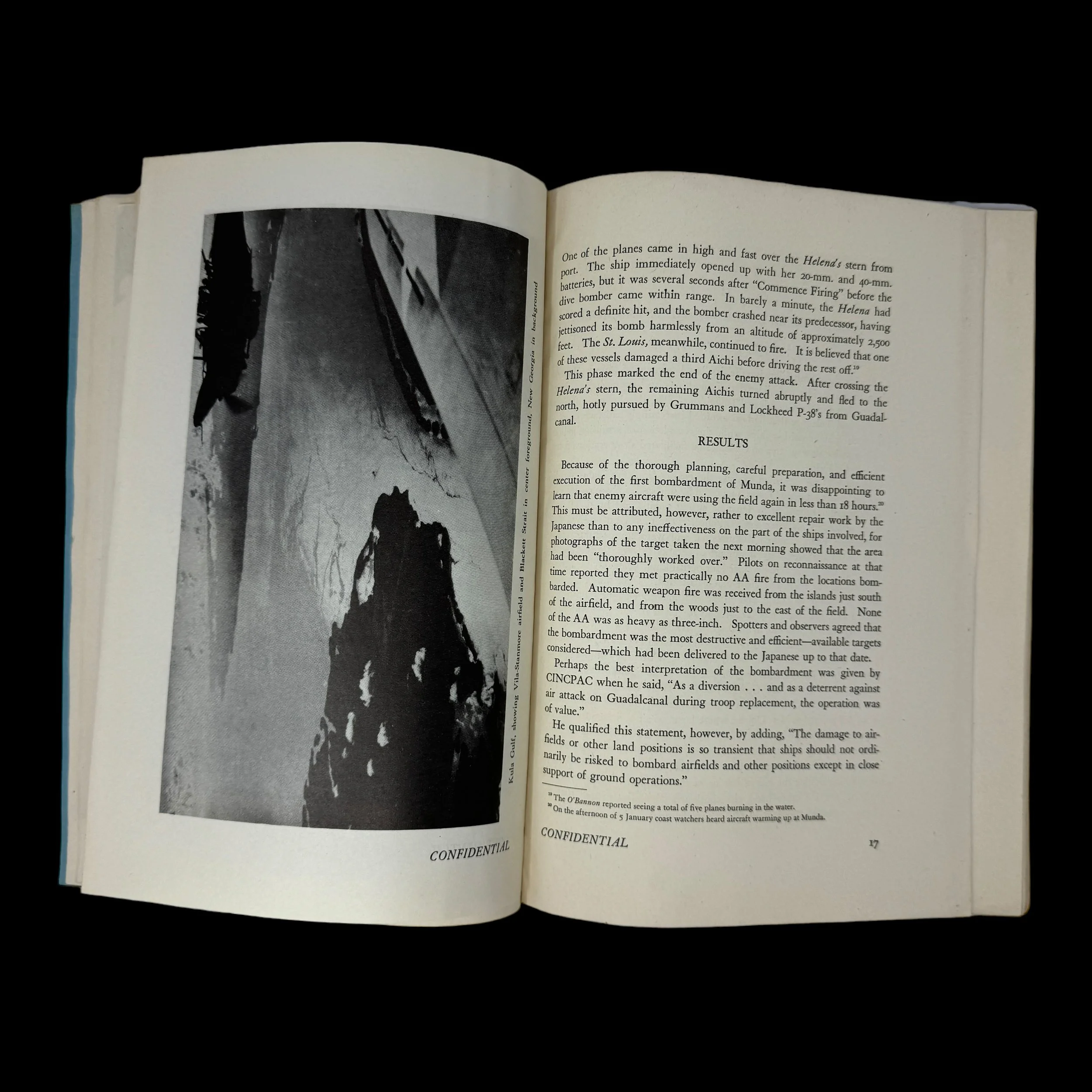





















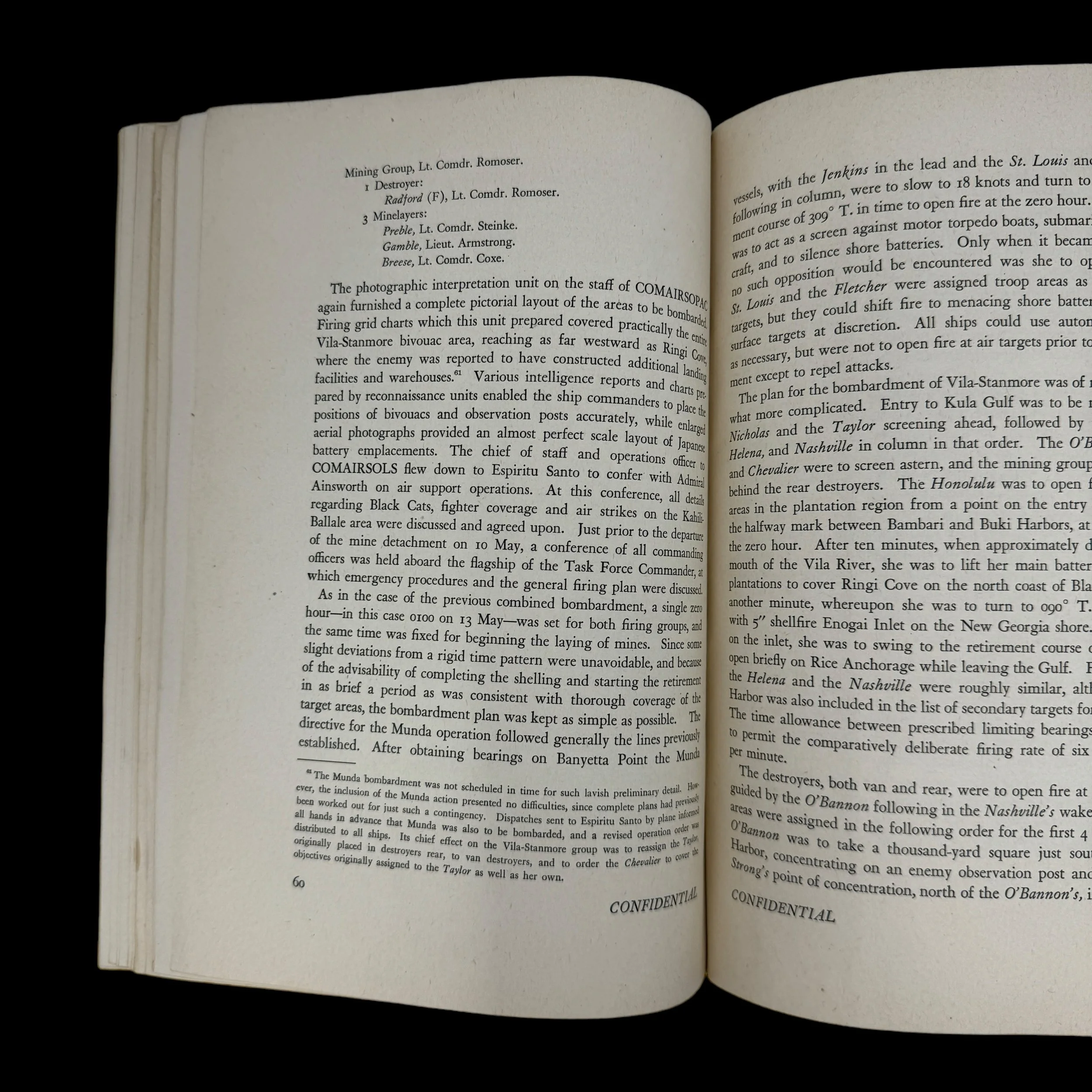

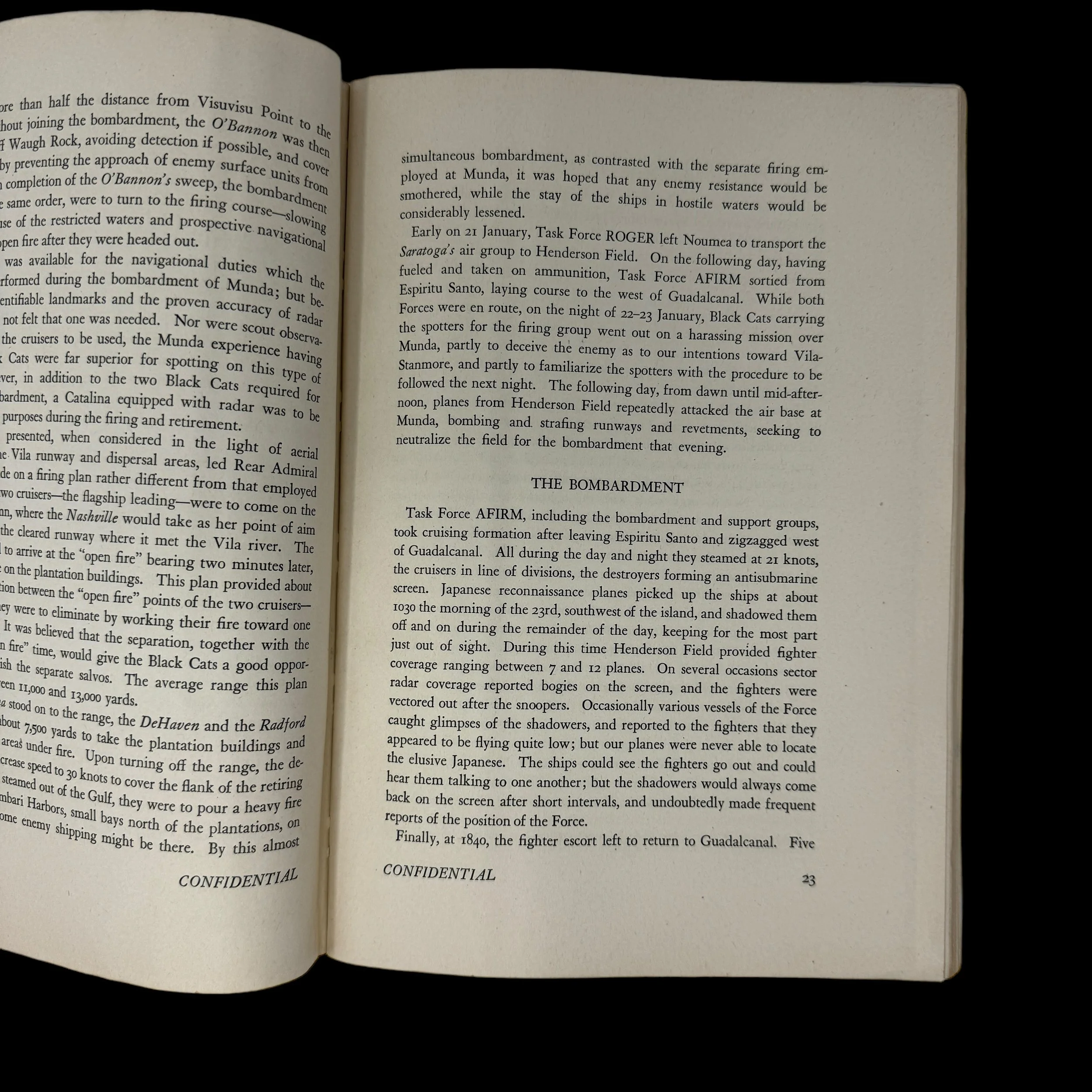
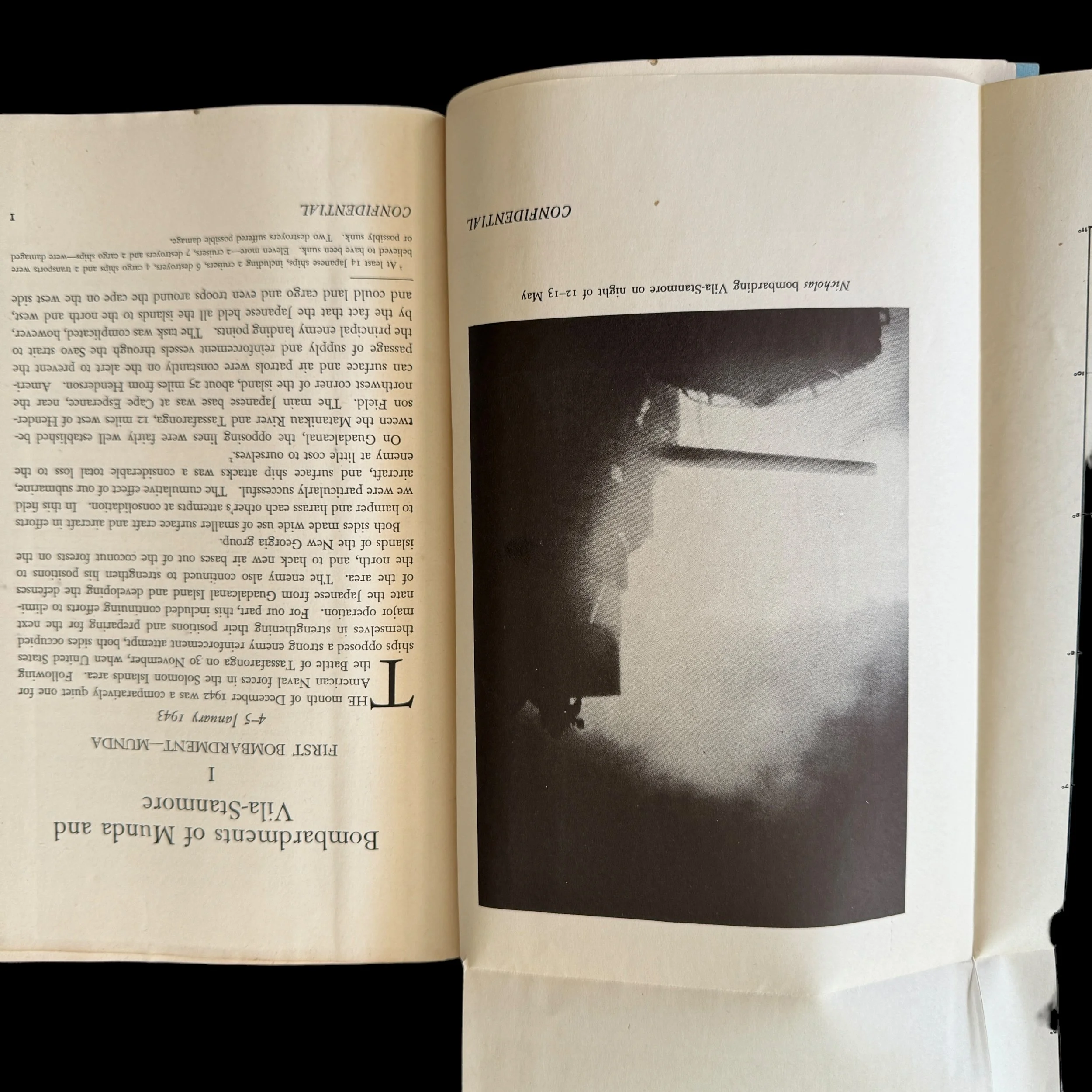






VERY RARE! WWII Original 1944 Operation Cartwheel "CONFIDENTIAL" Solomon Islands Campaign - Bombardment of Munda and Vila-Stanmore Combat Narrative Intelligence Report with Maps
Comes with a hand-signed C.O.A.
This extremely rare and museum-grade WWII artifact is an original 1944 dated “CONFIDENTIAL” marked Official U.S. Navy intelligence report (with accompanying CONFIDENTIAL battle maps) of the “Solomon Islands Campaign - Bombardment of Munda and Vila-Stanmore”.
These CONFIDENTIAL “Combat Narrative” of Operation Cartwheel intelligence reports were created under the of the Commander in Chief, U.S. Fleet and Chief of Naval Operations and were to be read by commissioned officers and high-ranking officials of the USN.
These combat narratives provided the most updated intelligence of battle operations and were meant to provide USN officers and high-ranking Navy officials with CONFIDENTIAL battle accounts, reports, and intelligence to inform future operations and their decisions in battle.
Less than 3,000 of each report was produced and most did not survive as it is noted by REAR ADMIRAL, U.S.N. Director of Naval Intelligence to “DESTROY OR BURN THE COPIES ONCE THEY HAVE BEEN READ AND HAVE SURVED THEIR PURPOSE”.
This specific “Solomon Islands Campaign - Bombardment of Munda and Vila-Stanmore” report was secretly kept by Lt. Milburn which is why it is one of only a small handful or original reports that are still known to exist today.
The Solomon Islands Campaign: Focus on the Bombardment of Munda and Vila-Stanmore (January-May 1943)
The Solomon Islands Campaign, a significant series of battles in the Pacific Theater of World War II, played a critical role in the eventual Allied victory over Japanese forces. This campaign, spanning from 1942 to 1945, was characterized by intense and often brutal engagements on land, sea, and air. One of the pivotal phases of this campaign occurred between January and May 1943, focusing on the bombardment of Munda and Vila-Stanmore. These strategic bombardments were essential in weakening Japanese defenses and paving the way for subsequent Allied offensives.
Background of the Solomon Islands Campaign
The Solomon Islands, an archipelago in the South Pacific, became a crucial battleground due to its strategic location. The campaign began with the Battle of Guadalcanal in August 1942, where the Allies sought to stop Japanese expansion and secure lines of communication between the United States and Australia. The victory at Guadalcanal marked a turning point, allowing the Allies to take the offensive in the Solomon Islands.
Following Guadalcanal, the Allies aimed to neutralize Japanese bases throughout the Solomons, starting with the central and northern regions. Among the targets were the airfields and naval bases at Munda Point on New Georgia Island and Vila on Kolombangara Island. These bases were vital for Japanese air and naval operations, making them primary objectives for Allied forces.
The Strategic Importance of Munda and Vila-Stanmore
Munda Point, located on the southern coast of New Georgia, hosted a significant Japanese airfield. Control of this airfield allowed the Japanese to launch air raids on Allied positions and shipping lanes. Similarly, Vila on Kolombangara Island served as a critical Japanese supply and staging area. Neutralizing these bases was essential for the Allies to secure their advance through the Solomons and disrupt Japanese operations.
The bombardment of these positions was part of Operation Cartwheel, a broader strategy to isolate the major Japanese base at Rabaul and weaken Japanese presence in the South Pacific. By targeting Munda and Vila, the Allies aimed to diminish Japanese air power, reduce their defensive capabilities, and facilitate future amphibious assaults.
Bombardment of Munda
The Allied campaign against Munda began in earnest in early 1943. The initial phase involved extensive aerial reconnaissance and bombing raids to gather intelligence and soften Japanese defenses. The U.S. Army Air Forces and the Royal New Zealand Air Force conducted numerous sorties against Munda airfield, targeting runways, aircraft, and supply depots.
Naval bombardments complemented these air raids. In January 1943, U.S. Navy cruisers and destroyers began shelling Munda Point. These bombardments were conducted under challenging conditions, including rough seas and the constant threat of Japanese air attacks. Despite these difficulties, the naval bombardments inflicted significant damage on Japanese installations and disrupted their operations.
Throughout February and March, the intensity of the bombardments increased. The Allies employed a combination of high-explosive and incendiary shells to maximize destruction. The Japanese defenders, however, were tenacious, repairing damaged facilities and fortifying their positions. This necessitated sustained and concentrated bombardments to degrade Japanese defenses effectively.
Bombardment of Vila-Stanmore
Parallel to the operations at Munda, the Allies also targeted the Japanese base at Vila-Stanmore on Kolombangara Island. The bombardment of Vila began in January 1943, with Allied aircraft conducting reconnaissance and bombing missions. These aerial attacks were aimed at disrupting Japanese supply lines and weakening their defensive capabilities.
The naval bombardment of Vila was coordinated with the efforts at Munda. U.S. Navy cruisers and destroyers, often operating under the cover of darkness, shelled Japanese positions at Vila-Stanmore. These bombardments aimed to destroy ammunition dumps, supply depots, and other critical infrastructure. The Allies sought to cripple the Japanese ability to reinforce and resupply their forces in the central Solomons.
The bombardment of Vila-Stanmore faced several challenges, including the rugged terrain and well-entrenched Japanese defenses. Despite these obstacles, the persistent naval and aerial bombardments inflicted substantial damage, contributing to the overall degradation of Japanese capabilities in the region.
Coordination and Challenges
The success of the bombardments at Munda and Vila-Stanmore required meticulous planning and coordination. The Allied forces had to synchronize aerial reconnaissance, bombing raids, and naval bombardments to maximize their impact. Effective communication and intelligence sharing were critical to ensuring that targets were accurately identified and attacked.
One of the significant challenges faced by the Allies was the resilience of Japanese defenders. The Japanese forces at Munda and Vila were well-prepared, utilizing natural terrain and constructed fortifications to their advantage. They were adept at repairing damaged facilities and quickly reestablishing their defensive positions. This necessitated sustained and repeated bombardments to achieve the desired level of destruction.
Additionally, the Allies had to contend with logistical difficulties. The remote location of the Solomon Islands and the challenging tropical environment posed significant logistical hurdles. Supplying the naval and air units involved in the bombardments required careful planning and resource management. Despite these challenges, the Allies demonstrated remarkable adaptability and perseverance.
Impact and Aftermath
The bombardments of Munda and Vila-Stanmore had a profound impact on the course of the Solomon Islands Campaign. By May 1943, the sustained Allied bombardments had significantly weakened Japanese defenses at both locations. The destruction of runways, supply depots, and fortifications impaired Japanese operational capabilities and morale.
The degradation of Japanese air power was particularly crucial. With the airfields at Munda and Vila rendered ineffective, the Japanese lost a critical platform for launching air raids against Allied positions. This allowed the Allies to achieve air superiority in the central Solomons, facilitating subsequent amphibious assaults and ground operations.
The weakened Japanese defenses at Munda paved the way for the Allied landings in June 1943. The Battle of Munda Point, which lasted until August 1943, resulted in an Allied victory and the capture of the airfield. This victory marked a significant step in the Allied advance through the Solomons and contributed to the overall success of Operation Cartwheel.
The bombardment of Munda and Vila-Stanmore from January to May 1943 was a critical phase of the Solomon Islands Campaign. These bombardments were instrumental in weakening Japanese defenses and disrupting their operations in the central Solomons. Despite the challenges posed by resilient Japanese defenders and logistical difficulties, the Allies' persistent and coordinated efforts resulted in significant strategic gains.
The success of these bombardments underscored the importance of joint operations and the effective use of air and naval power in the Pacific Theater. The lessons learned during the bombardments of Munda and Vila-Stanmore would inform subsequent Allied operations, contributing to the eventual defeat of Japanese forces in the Solomon Islands and the broader Pacific War.